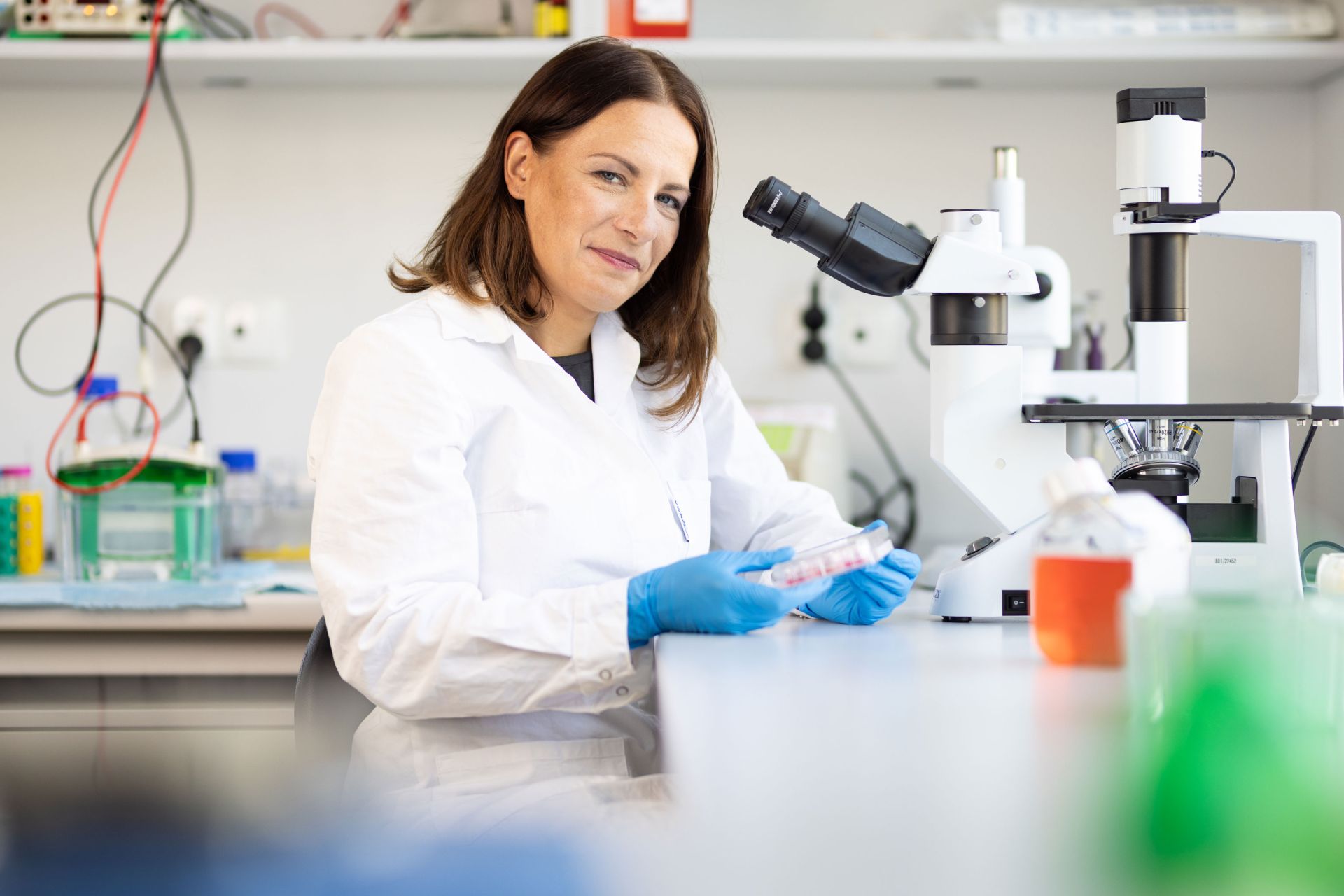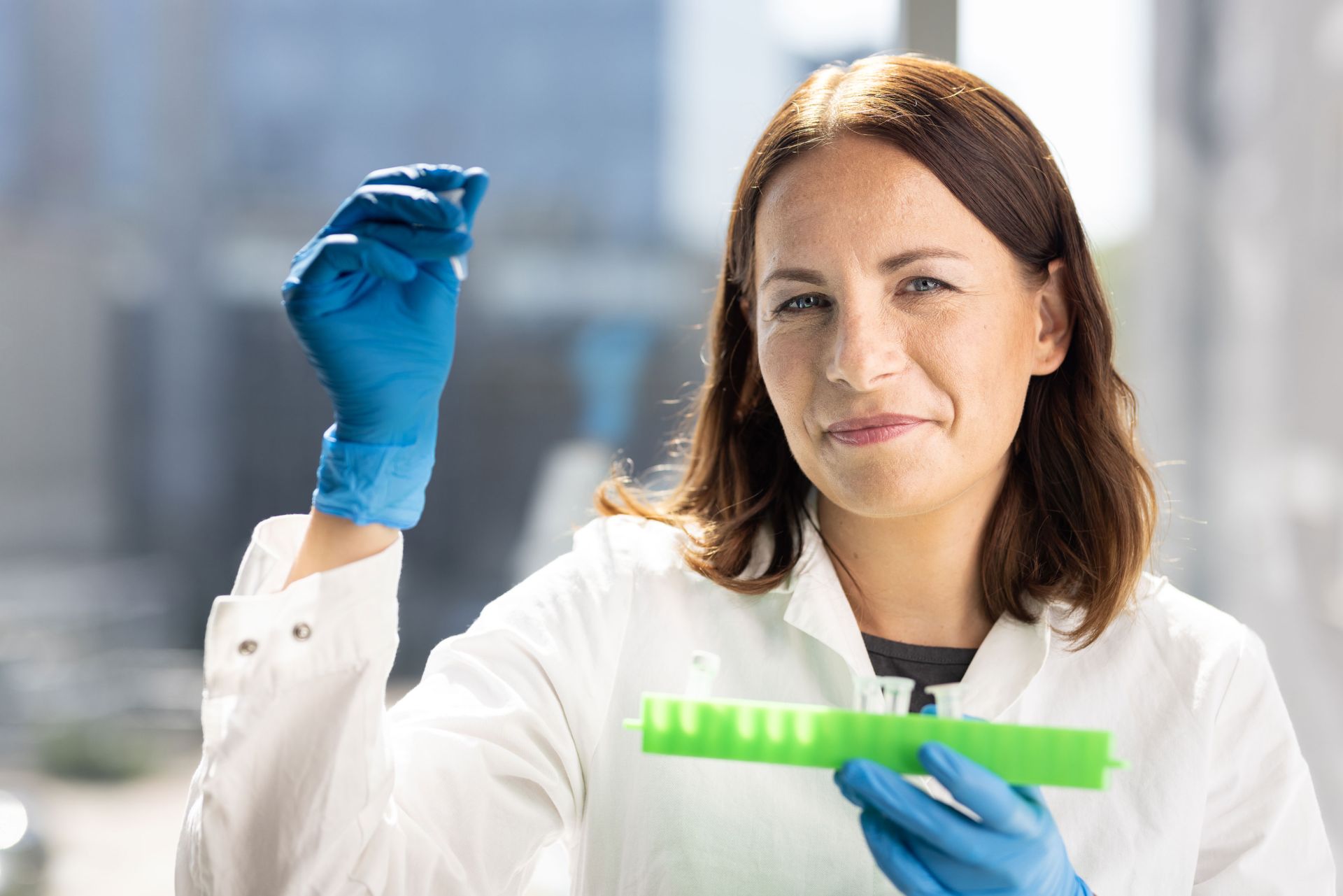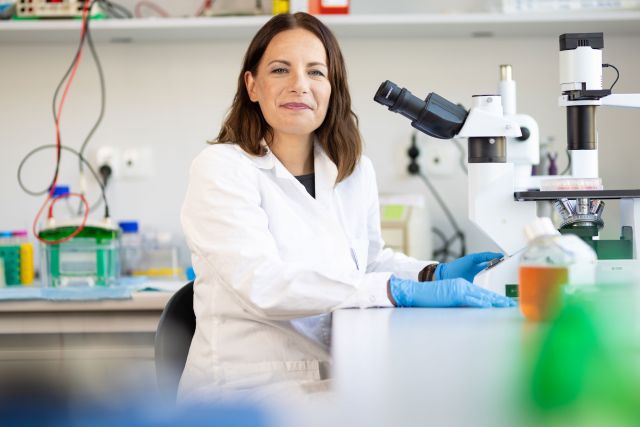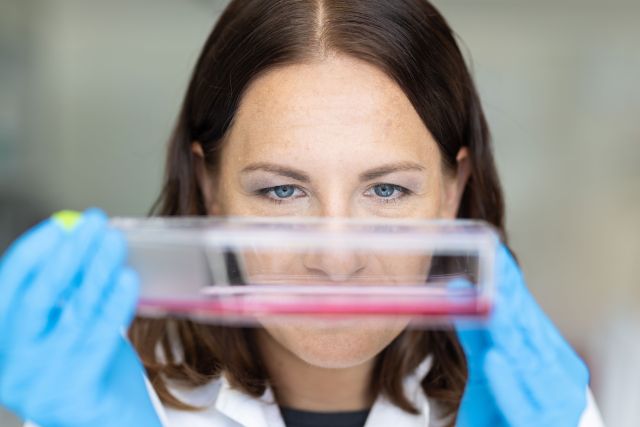Principal Investigator
:
Dr Aleksandra Pękowska
Nencki Institute of Experimental Biology
Panel: NZ4
Funding scheme
: DIOSCURI 1
announced on
7 November 2017
What is the secret behind the evolutionary explosion in the cognitive and computational capacity of the human brain? Astrocytes may hold the key to this fascinating riddle. Apart from their nutritive function, astrocytes also play a central role in the biogenesis and removal of synapses, i.e., two processes of key importance for neuroplasticity and, hence, learning.
In comparison with their counterparts in rodents or monkeys, human astrocytes show many unique morphological and functional properties. However, despite their important function, the structure and evolution of the regulatory network that coordinates the biology of these cells remain largely unknown. Our Dioscuri centre combines “omics” tools, CRISPR-Cas9, and stem cell and chimera models to uncover the genetic underpinnings of astrocyte function and evolution.
Isolating astrocytes from primate brains and growing them in a lab is very difficult, if not impossible. This is why our project focuses on using cutting-edge technologies to obtain astrocytes in vitro from induced pluripotent stem cells (iPS). This non-invasive approach allows to obtain any quantity of astrocytes for various mammalian species. Over the past three years, our lab has created a bank of iPS cells typical of humans, chimpanzees, macaques and mice; we have also implemented in vitro astrocyte differentiation and growing protocols.
 fot. M. Łepecki, dr Aleksandra Pękowska
fot. M. Łepecki, dr Aleksandra Pękowska
We employed molecular biology techniques to assess differences in gene expression patterns in human and monkey astrocytes. A gradual evolution of gene activity was observed. We identified more than a thousand loci, at which expression levels in humans were altered, as compared with chimpanzees and macaques. The list includes various factors related to brain disorders, such as multiple sclerosis or Alzheimer’s disease. We also identified a number of factors whose function is as yet unclear. Our data indicate that the evolution of astrocytes is associated with changes in the expression of many non-coding transcripts, which are particularly interesting, because the RNA molecules they produce can regulate the activity of other genes. At present, we are studying the implications of the most important of these factors, using the methods of genomic engineering and cell biology.
 fot. M. Łepecki, dr Aleksandra Pękowska
Gene expression is influenced by specific DNA sequences, known as regulatory elements. Enhancers act on promoters to increase their activity and, hence, boost gene expression. The role of insulators, on the other hand, is to inhibit enhancers. The evolution of gene expression levels is related to various changes in the sequences of enhancers, promoters and insulators, which may either increase or reduce their activity. By using molecular biology techniques and high-throughput sequencing methods (ATAC-seq and ChIP-seq), we obtained a map of regulatory elements active in the astrocyte genomes of humans, chimpanzees and macaques. This unique data set allowed us to correlate transcriptional and epigenetic changes and identify the mechanisms that may be involved in the evolution of gene expression in human astrocytes. At present, we are implementing a murine chimera model to explore the impact of these newly identified genes and regulatory elements on the biology of astrocytes and, more broadly, on brain activity. This research is funded from the Dioscuri grant and the EMBO Installation Grant awarded by the European Molecular Biology Organization.
fot. M. Łepecki, dr Aleksandra Pękowska
Gene expression is influenced by specific DNA sequences, known as regulatory elements. Enhancers act on promoters to increase their activity and, hence, boost gene expression. The role of insulators, on the other hand, is to inhibit enhancers. The evolution of gene expression levels is related to various changes in the sequences of enhancers, promoters and insulators, which may either increase or reduce their activity. By using molecular biology techniques and high-throughput sequencing methods (ATAC-seq and ChIP-seq), we obtained a map of regulatory elements active in the astrocyte genomes of humans, chimpanzees and macaques. This unique data set allowed us to correlate transcriptional and epigenetic changes and identify the mechanisms that may be involved in the evolution of gene expression in human astrocytes. At present, we are implementing a murine chimera model to explore the impact of these newly identified genes and regulatory elements on the biology of astrocytes and, more broadly, on brain activity. This research is funded from the Dioscuri grant and the EMBO Installation Grant awarded by the European Molecular Biology Organization.
Interlaminar astrocytes are a type of astrocytes found only in primates. Research on the brains of patients with Alzheimer’s disease suggests that interlaminar astrocytes dwindle in the most advanced forms of this devastating condition. However, their functions and epigenome have not yet been defined. Thanks to our research, funded under NCN’s OPUS 22 call, we will be able to study the molecular profile of interlaminar astrocytes and, in the future, hopefully understand the role of these unique cells in the development of neurodegenerative disorders.
Our research at the Dioscuri Centre for Chromatin Biology and Epigenomics also looks into the mechanisms behind the activity of DNA regulatory elements. Thanks to OPUS 17 and Sonata Bis grants, we have discovered surprisingly wide-ranging changes in the set of proteins that bind insulators during the differentiation of embryonic stem cells into nerve cells. We have demonstrated this new regulatory mechanism in mammalian development. We have also been able to implement new genome-mapping technologies. Our research lays the groundwork for a better understanding of the mechanism that regulates the specificity of regulatory elements. We are also members of the chrom_rare international research network (Maria Skłodowska Curie Actions), which aims to understand the molecular underpinnings of disorders associated with various mutations in chromatin activity regulators.
Lab website: https://pekowskalab.nencki.edu.pl
Selected Publications:
- Verkhratsky A., Arranz AM, Ciuba K, Pękowska A. Evolution of neuroglia. A.Ann N Y Acad Sci. 2022 Oct 26.
- Dehingia B., Milewska M., Janowski M. & Pękowska A. CTCF shapes chromatin structure and gene expression in health and disease. EMBO Reports (2022), e55146; https://doi.org/10.15252/embr.202255146.
- Janowski M., Milewska M., Zare P., & Pękowska A., Chromatin Alterations in Neurological Disorders and Strategies of (Epi) Genome Rescue. Pharmaceuticals 2021, 14(8), 765.
- Pękowska A.^, Klaus B, Xiang W., Severino J., Daigle N., Klein F.A., Oleś M., Casellas R., Ellenberg J., Steinmetz L.M.S., Bertone P.^, Huber W.^ Gain of CTCF-anchored chromatin loops marks the exit from naive pluripotency. Cell Systems Nov. 28; 7(5):482-495.
- Vian L.#, Pękowska A.#, Rao SSR.#, Kieffer-Kwon K-R#, Jung S#, Baranello L., Huang SC., El Khattabi L., Dose M., Pruett N., Sanborn AL., Canela A., Maman Y., Oksanen A., Resch W., Li X., Lee B., Kovalchuk AL., Tang Z., Nelson S., Di Pierro M., Cheng RR., Machol I., St Hilaire BG., Durand NC., Shamim MS., Stamenova EK., Onuchic JN., Ruan Y., Nussenzweig A., Levens D., Aiden EL., Casellas R. The energetics and physiological impact of cohesin extrusion. Cell 2018 May 17;173(5):1165-1178.e20.
- Schwarzer W.#, Abdennur N.#, Goloborodko A.#, Pękowska A., Fudenberg G., Loe-Mie Y., Fonseca N.A., Huber W, Haering C., Mirny L., Spitz F. Two independent modes of chromosome organization are revealed by cohesin removal. Nature 2017 Nov 2;551(7678):51-56
- Pękowska A.#, Benoukraf T.#, Zacarias-Cabeza J.#, Belhocine M., Koch F., Holota H., Imbert J. Andrau JC., Ferrier P., Spicuglia S. H3K4 tri-methylation provides an epigenetic signature of active enhancers. EMBO J. 2011;(July):1–13.
- Pękowska A., Benoukraf T., Ferrier P., Spicuglia S. A unique H3K4me2 profile marks tissue-specific gene regulation. Genome Research, 2010 Nov; 20(11):1493–502.
Project title: Evolutionary and functional genomics of astrocytes
Dr Aleksandra Pękowska
Aleksandra Pękowska is an Assistant Professor at the Marceli Nencki Institute of Experimental Biology, PAS, and Head of the Dioscuri Centre for Chromatin Biology and Epigenomics. In 2006, she graduated in biology from the University of Łódź, specialising in biophysics. For her PhD, she joined a lab run by Dr Pierre Ferrier (CIML, Marseille) under a programme entitled “Chromatin Plasticity” (Maria Skłodowska Curie Actions), where she contributed to the discovery of chromatin modifications at active enhancers (Pękowska A. et al., 2011, EMBO J) and a pattern of histone modifications characteristic of tissue-specific genes (Pękowska A. et al., 2010 Genome Res.). In 2011, Dr Pękowska joined the research groups of Dr Wolfgang Huber, Lars Steinmetz and Paul Bertone (EMBL, Heidelberg, and EBI) for an interdisciplinary postdoctoral fellowship (EIPOD, EMBL-Marie Curie Actions), during which she demonstrated that the restriction of the developmental potential of embryonic cells coincides with the formation of structural chromatin loops (Pękowska et al., 2018 Cell Systems). In 2016, she moved on to a team run by Dr Rafael Casellas (NIAMS/NIH, Bethesda), where she helped discover the specialised tridimensional chromatin structure that correlates with the activity of super-enhancers (Vian L.#, Pękowska A.# et al., 2018 Cell). In 2019, Pękowska opened the Dioscuri Centre for Chromatin Biology and Epigenomics at the Marceli Nencki Institute of Experimental Biology, PAS. Dioscuri is a programme launched by the Max Planck Society, managed in partnership with the National Science Centre (Poland) and mutually funded by the Polish Ministry of Science and Higher Education and the German Federal Ministry of Education and Scientific Research.


